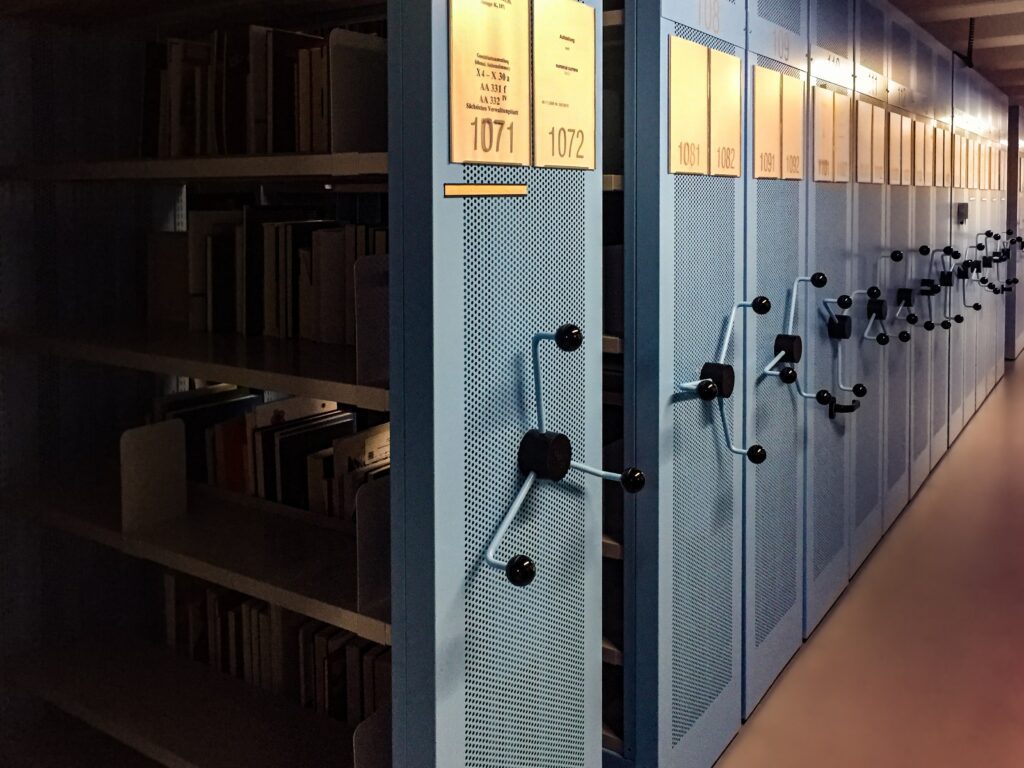
QR Codes were originally invented in 1994 to streamline automotive production. Today, however, we see them everyday, in restaurants, product packaging, stores, museums, and more. Because they can now be scanned using the native camera of modern smartphones, we see more and more brands and institutions utilizing them for their campaigns and operations. In this article, we will tackle the use of dynamic QR Codes for archives and records centers.
What are Dynamic QR Codes?
We can categorize QR Codes into two main types: static and dynamic. Static QR Codes are permanent, non-editable barcodes. We use them for a variety of purposes: for information that will never change, for a one-off campaign, or for simple messages. You can easily make one using any free QR Code generator.
Dynamic QR Codes, on the other hand, are QR Codes that you can use over and over again. Additionally, dynamic QR Codes are trackable, which means you can gain important insights about your customers. You can create dynamic QR Codes using a paid QR Code generator.
One of the main benefits of dynamic QR Codes is they can be used for different campaigns and purposes. For example, you can initially use it to direct your customers to follow your social media page. In the future, it can be repurposed into a link to an online shopping platform or website where customers can buy your products, into a link to your advertisement on YouTube, or into a feedback form. The reusable capabilities of dynamic QR Codes make them cheaper in the long run, since your customers can use the old QR Code to access new content.
Dynamic QR Codes for Archives and Records Management
The benefits of dynamic QR Codes are not exclusive to marketers and brands, however. Schools, offices, libraries and similar agencies have multiple uses for them as well. For archives and records centers, one great benefit is password-protection. This feature allows archives and records managers to limit access to their collections by authorized personnel or clients only.
The unlimited redirect feature of dynamic QR Codes can add a layer of security to your archives and records center. If your web page is hacked, for example, you can redirect your clients to a different site.
Another advantage for dynamic QR Codes for archives and records centers is that you can set access limits to specific locations, date and time, devices and operating systems. This gives you control over your users, and can be useful if, for instance, you want to limit access to on-site only. This way, you will know if someone scans your QR Code from outside and do the appropriate actions to enhance your records protection.
Finally, you can enable/disable dynamic QR Codes.

Different Uses of Dynamic QR Codes for Archives and Records Centers
Limited-access Personnel ID
Archives are typically a controlled environment in order to carefully preserve and prevent damage to historical records. That is why, unlike libraries and museums, they are not usually open for the public to visit the stacks or shelves. Instead, only a few designated personnel are allowed to handle the records.
Identification cards can include a QR Code that the security staff can scan before letting personnel inside the room. Using a feature called QR Page here on QR Cloud. For example, you can change the time when the QR Code is activated. This way, the security personnel can easily identify who is scheduled to be at the room at a specific time.
Display Contents of Shelf or a Box of Records
If you haven’t been to an archive repository, it is usually a room that has shelves and boxes that contain sets of records. Typically, the shelves and labels are simply coded, and individual records or descriptions thereof are not displayed.
A QR Code will be an excellent yet minimal addition to these labels. Since QR Codes are able to contain a large amount of information – over 7,000 alphanumeric characters and symbols – you can add the individual records that a box contains. Furthermore, if you use a dynamic QR Code, you can update the contents when a record is added or permanently removed from the box without having to generate a new barcode.
We see two reasons why this is useful for archives and records centers. First, so that staff can verify whether the box contains the needed record. Second, so that staff can verify whether the box contains the record without having to open the box and touch the records in it.
(If you didn’t know, historical records in archival repositories are conserved and preserved. Thus they require very minimal handling and skin contact.)
QR Code for Electronic Archiving
Every now and then, an archives center will have an open house or feature a newly acquired or preserved historical record. This is typically done to showcase the records to their benefactors and patrons.
The center can use what we at QR Cloud call Dynamic File Link. It is the reusable URL behind a dynamic QR Code. You can use them to upload different files one at a time. You can give the QR Code to your patrons and benefactors once. Also, you can notify them whenever you have a new featured item in your collection. This what users can see when they access the QR Code. This way, they don’t have to physically be at the center.
And with the data analytics feature of dynamic QR Codes, you can still get the metrics in order for you to gauge the success of your open house or feature.
Bottom Line
Using dynamic QR Codes for archives and records centers can be in the form of limited-access personnel ID, displaying contents of specific boxes, and electronic archiving. Use QR Codes to revolutionize the way we protect historical records in archives and records centers.
